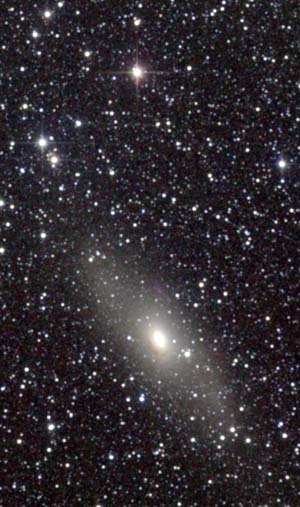A few years back I was working on creating educational products for the NASA orbiting observatories Fermi and Swift. These look at super-violent high-energy objects like exploding stars and black holes gobbling down matter. All big galaxies have supermassive black holes in their cores, and some are sloppy eaters, spewing out vast amounts of energy as the material makes The Final Plunge.
I remember finding images of one such galaxy, simply called the Circinus Galaxy, and being baffled as to why I had never heard of it or could find so little info on it. It’s only 14 million light years away, close for a galaxy! Turns out, it’s heavily obscured to visible light telescopes because it happens to lie in the plane of our own galaxy, and we have to look through lots of thick dust to see it. That dims the light a lot! But infrared light can pierce through that dust, making this an interesting object at wavelengths invisible to the human eye, colors that happen to be the specialty of NASA’s WISE spacecraft. So when astronomers took a look, well, behold!
What an awesome picture! [Click to blackholenate.]
There’s a lot to see here. First, obviously, the galaxy’s core is incredibly bright! That’s from the huge amount of infrared energy pouring out of the nucleus. One source is the matter falling into the black hole; that stuff piles up into a disk that has a lot of gas and dust. Close in to the black hole it gets very hot and emits X-rays, but farther out it’s only warmish and emits infrared. Even farther out from there, light years from the core, there is a ring of stars being born in the galaxy, and they too blast out IR.
 If you look closely, just outside the intense core, you can see a faint oval marking the galaxy’s spiral arms. That’s more obvious in the image here, which is from a ground-based telescope called 2MASS, for 2-Micron All Sky Survey, another infrared telescope. The orientation is the same (you can see some of the same stars in both images) and the galaxy itself is pretty clear.
If you look closely, just outside the intense core, you can see a faint oval marking the galaxy’s spiral arms. That’s more obvious in the image here, which is from a ground-based telescope called 2MASS, for 2-Micron All Sky Survey, another infrared telescope. The orientation is the same (you can see some of the same stars in both images) and the galaxy itself is pretty clear.
In the WISE image, though, you can see two long, sweeping, S-shaped curves. Those are much larger spiral arms arcing out from the galaxy. They appear green in the WISE image because they are emitting at a wavelength of 12 microns, much farther out into the IR than 2MASS can see (in the WISE image, blue is from IR light at 3.4 microns, cyan at 4.6 microns, and red at 22 microns; for comparison, the reddest light the eye can see is roughly 0.75 microns or so). Usually, that wavelength comes from warm dust and long-chain organic molecules called PAHs, for polycyclic aromatic hydrocarbons – basically, smelly soot. This indicates the presence of young stars as well, since locations of star birth generally have lots of PAHs.
I mentioned that the region near the black hole is blasting out high-energy light as well. Here’s how this looks to the orbiting Chandra X-ray observatory (left), and Hubble (right):
The Hubble image clearly shows the spiral arms and some of the material blasting out, while the Chandra image shows that lots of powerful X-rays are being emitted as well.
By combining all these images, all these data across the electromagnetic spectrum, we get a much clearer picture – figuratively and literally – of this enigmatic object. Imagine! Until 1975, an entire nearby galaxy was hidden from our view! What else is out there, waiting to be found?
Image Credits: WISE: NASA/JPL-Caltech/WISE Team; 2MASS: S. Van Dyk (IPAC); Hubble: NASA/A.Wilson et al.; Chandra: NASA/Penn State/F. Bauer et al.
Related posts:
- A black hole wind is rising
- Evidence and theory collide with galactic proportions
- Taste my death ray, 3C321!
- Super zoom of galactic doom
- Voorwerp! (an object that looks much like Circinus)